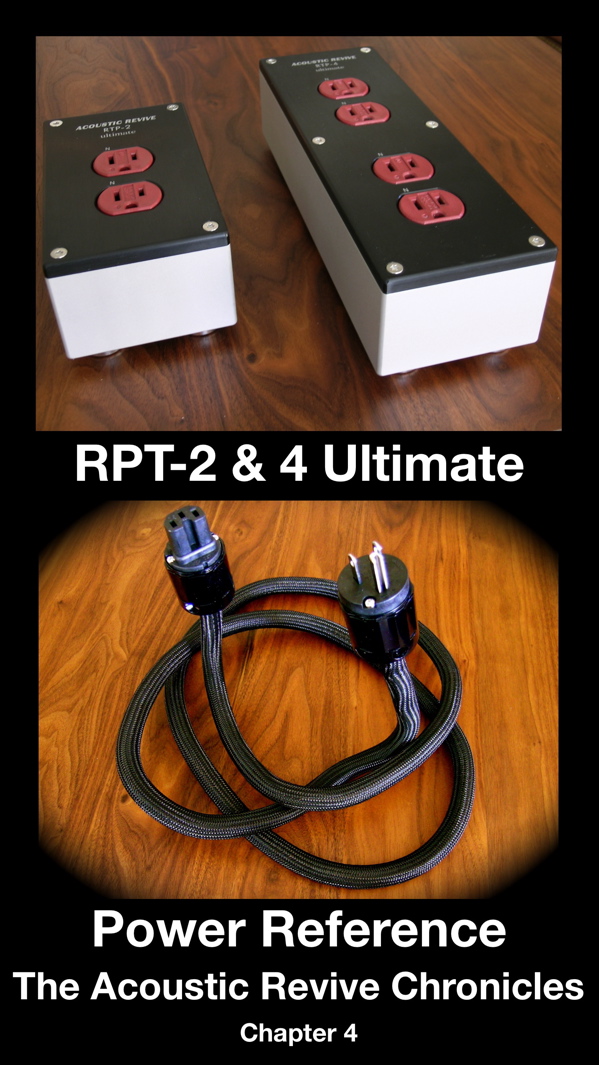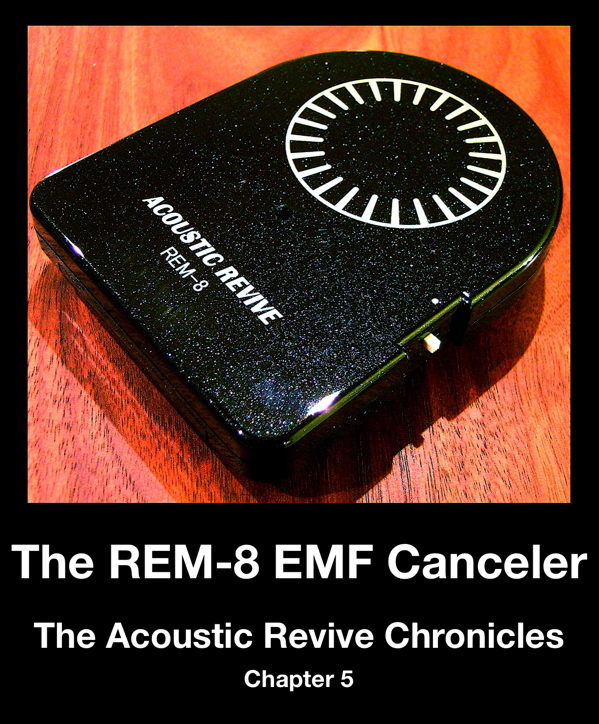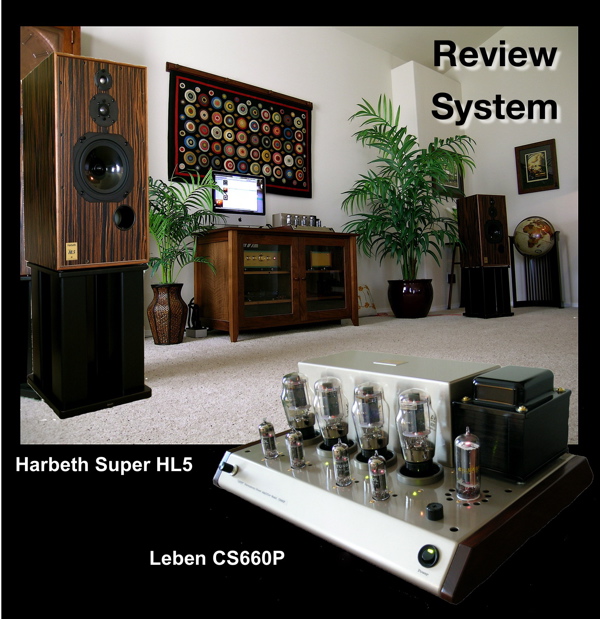You are reading the older HTML site
Positive Feedback ISSUE
40november/december 2008
The Acoustic Revive Chronicles, Chapter 5: The REM-8
EMF Canceller
by Jeff Day
Welcome to the "Acoustic Revive Chronicles, Chapter 5". This is the second installment of the "Acoustic Revive Chronicles" here at Positive Feedback Online, the first being Chapter 4 in Issue 39.
Mr. Ken Ishiguro designs the Acoustic Revive system and room tuning products. Ken-San's design goal is provide products that help voice one's Hi-Fi system so that it will play a recording "so that it sounds natural and not as though it is being played back over an electrical device." For those who have been following my writing here at PFO—and previously at 6Moons—know that's exactly what I try to achieve in the voicing of my own Hi-Fi rig. So Ken-San's statement did to me what my Grandfather's fly-fishing buddy, Norman Maclean's, lure did to a Montana rainbow trout—it hooked me! I had to bite and check it out!
In Chapter 4 I wrote about the RPT-2 and RPT-4 Ultimate Power Distributors and the Power Reference Power Cables. I was really impressed by the enormous improvement in my system's performance that these beautifully crafted products provided. The pairing of these two products improved the performance of my system by reducing the electronic character of the recorded music, making it more natural and more like the music you hear in life. Musical attributes of recordings like timbre, meter, tonality, harmony, beat, tempo, syncopation, and melody all became more convincingly life-like. The overall effect was to make the music more dramatic, bigger, more exciting, and more entertaining—more like you experience in life.

Not only that, but at the same time the way my Hi-Fi rig reproduced the sonic attributes of recording artifacts improved as well: soundstaging, imaging, transparency, perspective, and the sense of space became more tangible and vivid. Improving the sonics of a Hi-Fi system normally comes with the cost of making the overall experience less convincing musically due to an added sense of artificiality due to increased presence of electronic artifice. But I got improved musicality and sonics, which is a little like going on a richer diet and slimming down and becoming more muscular at the same time. It's not supposed to work that way, so the fact that it did is quite an accomplishment in my book.
The Acoustic Revive REM-8 EMF Canceller
In Chapter 5 I will be discussing a new product from Acoustic Revive, the REM-8 EMF Canceller ($550 US), that is intended to address the problem of the electromagnetic waves emitted by transformers inside Hi-Fi gear that can degrade the performance of circuit boards and internal wiring, which ultimately degrades sound quality and the musical experience.

To deal with this issue some Hi-Fi equipment manufacturers place shielding over the transformers in their equipment, or place the transformers in a separate shielded chassis far away from sensitive circuit boards and internal wiring. However, according to Acoustic Revive, in many cases the magnetic field emitted by transformers still passes through the shielding and equipment housings to degrade the performance of Hi-Fi gear.
In order to deal with this problem Acoustic Revive developed the REM-8 EMF Canceller, a small battery powered electronic device about the size of a coffee coaster for a Starbucks coffee mug, that is placed under or atop the transformers of audio (or video) equipment with the intent of removing the caffeinated-like sonic edge caused by transformer emitted EMI on sensitive audio circuits. Aki Monobe of Acoustic Revive told me that the "REM-8 pulses a magnetic field which we call a "zero magnetic field" in Japan. The REM-8 pulses the zero magnetic field into the transformer at a frequency of 7.83Hz (the Schumann frequency) to produce a kind of electromagnetic "Black Hole" for EMI that neutralizes its negative effect." Acoustic Revive says that the REM-8 "will dramatically reduce noise, improve sound imaging and remove electronic glare, resulting in a very natural, realistic sound quality."
Review System
For this review I used my primary music listening system that consists of an Apple iMac as a music server feeding digits to an Mhdt Labs Paradisea+ Vacuum Tube USB DAC, routed through a Leben RS28CX full function vacuum tube preamplifier (that utilizes a Leben RS28PX vacuum tube power supply in a separate chassis), into a Leben CS-660P KT66 vacuum tube power amplifier that powers my Harbeth Super HL5 loudspeakers. Interconnects and speaker cables are by Audio Tekne, my USB digital cable is the Locus Design Group Polestar, and all power cables are the Acoustic Revive Power Reference. Everything is plugged into Acoustic Revive RPT Ultimate Power Supply Boxes. I'm temporarily without a vinyl front end as I'm assembling a new one at this very moment.

Listening Impressions
I tried placing the REM-8 EMF Canceller on each of the transformers in my audio system to see if I could hear any effect, and if so, what that effect might be. I placed the REM-8 under (or on top of) the chassis of equipment where the transformer was located, or in the case of the Leben CS660P power amplifier, I placed it directly on the power transformer. Once optimum locations have been determined, Acoustic Revive says you can attach the REM-8 to the equipment's chassis using Velcro or two-sided tape if you wish, although I did not try that.
First of all, let me say that I did hear easily audible changes in the performance of my Hi-Fi rig as a result of using the REM-8, and in pretty much the same way as billed—a smoother, more natural, more musically engaging, and less electronic sounding take on the music.
For example, take Allison Krauss' a cappella version of Down to the River to Pray on the O Brother, Where Art Thou? soundtrack. This performance features a choir of a cappella voices singing a beautiful old gospel chestnut that would make an atheist want to sign along and yell "Halleluiah!" It's a warm and resonant recording with spacious acoustics and beautiful harmonizing of voices. The first thing I noticed after turning on the REM-8 and placing it over the transformer of my Mhdt Labs Paradisea+ USB DAC was that the soundspace of the recording opened up pretty dramatically, infusing my room with the recording's acoustic as the dominant acoustic presence, with my room's acoustic signature pretty much retreating from audibility. The vocal images also seemed more solid and eerily life-like, and it was easier to pick out the harmonizing voices and the differing textures they introduced to the song.
Another gospel chestnut is Lynn Howard's version of Softly and Tenderly from the soundtrack of the movie The Apostle. Howard has a beautiful voice accompanied by a Hammond B3 and an acoustic guitar, a combination that had quite an ethereal effect on this listener. With the REM-8 engaged, one of the things I noticed was that it seemed like the volume level went up somewhat on both Softly and Tenderly and Down to the River to Pray, which has the effect of moving the perspective of the recording slightly forward and making it more immediate.
On a jazzier note, The Girl from Ipanema song from the Getz/Gilberto album never fails to wow me with its jazzy Latin vibe—it might not be gospel but it sure is heavenly! With the REM-8 turned on the soundstage expanded in height, width, and depth. The right channel vocal popped out in front of the speaker plane in rather holographic fashion with the subtle shift forward in perspective the REM-8 induces, and many layers of depth are revealed in the soundstage as well.
Overall, I think that the most important attribute of the REM-8 is how it makes it easier to get caught up in the musical content of a recording. On album after album I noticed how the musical attributes of recordings like timbre, meter, tonality, harmony, beat, tempo, syncopation, and melody all were presented with more of a natural 'living presence' that pulled me deeper into the musical performance. Sonic attributes of recording artifacts like soundstaging, imaging, transparency, perspective, and the sense of space were all intensified without the additional electronic artifice and diminishment of musical attributes that normally accompanies improvements in those areas.
In use I found that the REM-8 had the most effect when used as far upstream as possible in the electronics chain—at the source. The effect of the REM-8 was greater on my Mhdt Paradisea+ USB DAC (immediately obvious) than it was on my Leben RS28CX preamplifier, which in turn was greater than the effect the REM-8 had on my Leben CS660P amplifier (subtle). I assume there is a cumulative effect from using multiple REM-8s in a Hi-Fi system, but I could not verify that as I had only one review sample at my disposal.
Summary
The Acoustic REM-8 EMF Canceller works as billed by providing a more natural and musical presentation of the musical content of recordings while improving sonics related to soundstaging, imaging, soundspace, and the like. The effect of the REM-8 is greater than subtle, but not drop-your-jaw dramatic, being somewhere between the two. If you won't miss the $550 it will incur on your wallet, then I say check it out, I think it'll put a smile on your face.
Pricing: Acoustic Revive REM-8 EMF Canceller is priced at $550 US.
Quality of construction: The REM-8 is a lightweight little plastic device that seems well made enough, but will not blow you away with the uber level of build quality that the Acoustic Revive RPT Ultimate Power Distributors or Power Reference Power Cables have, for example.
Value: I think that the REM-8 is a little expensive for what it is, but it does work as billed.
Condition of component received: Perfect.
Human interactions: Yoshi Hontani (Acoustic Revive exporter) is the best person to work with I can imagine. He is expedient, courteous and helpful. The same goes for Aki Monobe of Acoustic Revive and US importer Joe Cohen of the Lotus Group. A class act all the way around!
Acoustic Revive website: www.acoustic-revive.com/english/index.html
US Importer's website: www.lotusgroupusa.com
